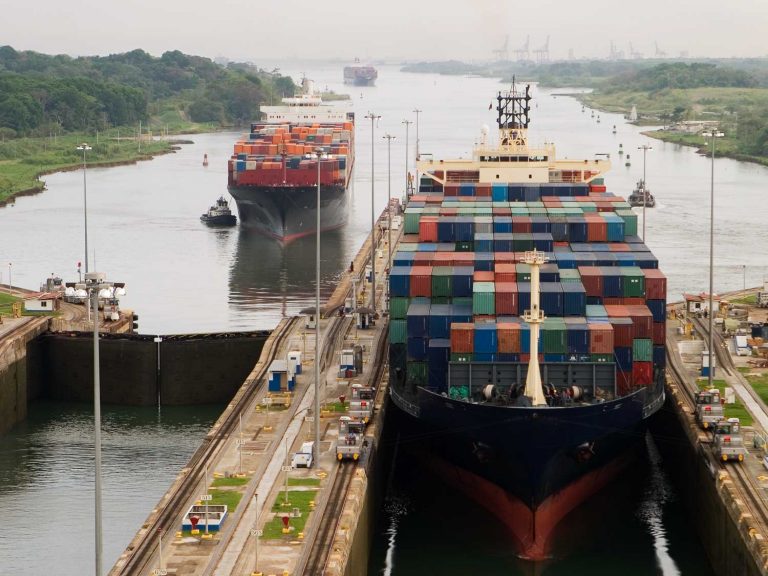
Date:
Risk of Panama Canal disruption rising
Unpredictable weather patterns and drought for most of 2023 have driven the Panama Canal Authority to impose numerous draft restrictions, reducing vessel transit numbers, and cutting vessel booking slots for lock usage, due to low water levels.
The Panama Canal consists of the man-made lakes of Miraflores and Gatun, with the panamax locks taking vessels with up to a 12.5 m draft and the neo-panamax locks for vessels up to a 15.2 m draft.
The dual system is run on fresh water, with only the new system able to reuse some of the water used to transit the vessels, and with the lowest rainfall this century, the Panama Canal Authority’s limits on daily transit and vessel draft restrictions will stay in place for the rest of the year and throughout 2024.
While the ongoing restrictions have not impacted shippers yet, we are monitoring the canal situation closely, because extended delays for goods coming into the US for the coming autumn and winter seasons, could impact capacity, schedules and prices.
The backlog of ships trying to enter the Panama Canal is growing, with current estimates putting the number at over 200 vessels. Containerships are the canal’s biggest users and are usually given preferential status, which means most have avoided the worst of the disruption, but neo-Panamax ships are waiting up to 18 days for northward transits, with similar delays for southbound transits.
Despite the wait, delays have not translated into noticeably late arrivals at US East and Gulf coast ports and with vessel capacity utilisation currently low, there has been capacity to absorb, and it will probably be a while yet before any delays are seen at the ports.
The number of daily transits through the canal has been capped at 32, compared with the 34 to 42 it can handle at peak capacity, in a bid to conserve water and some carriers are re-routing to avoid the backlog.
Ordinarily, neo-Panamax vessels move through the canal at an average 50 feet of draft but this has now been reduced to 44 feet to cope with the drought conditions, which means large container ships with good utilisation may have to offload containers, to make the vessel lighter and match the lower water draught.
In view of the draft restriction, some carriers have reduced maximum payloads, while others are still accepting heavyweight cargo and carriers have not yet been aggressive in imposing Panama Canal surcharges, though there is a suspicion that many have already rolled them into the ocean freight rate.
If you have any concerns about the issues raised in this article, we can review your situation and explain your options, including alternative carriers, ports and routes.
With a collaborative approach, we will provide the most efficient and cost-effective solutions, to ensure that your supply chain expectations are met.
